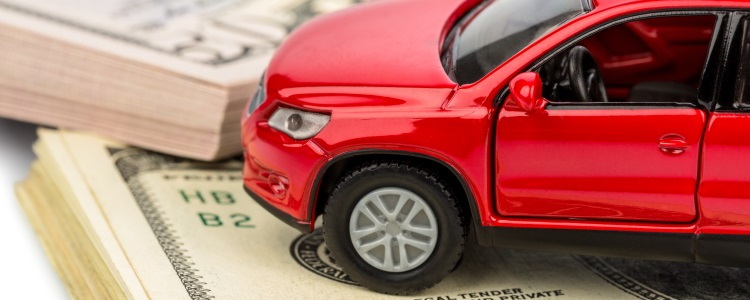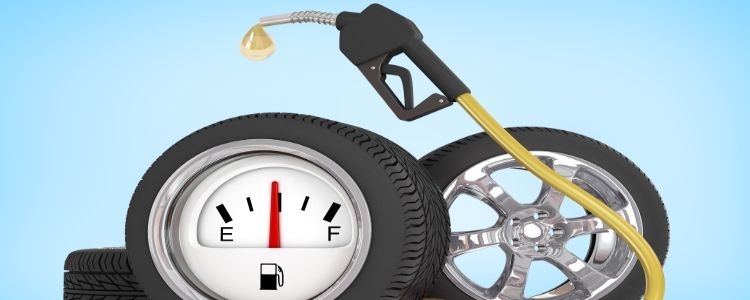A new study from the personal finance experts at Bankrate.com found that, using a common car buying budgeting technique, the average new car purchase isn't affordable for median-income households in 24 of the country's largest 25 metro areas.
Bankrate 2017 Car Affordability Study
Using the common "20/4/10 rule," Bankrate found a median-income household doesn't earn enough to afford the average new vehicle price tag in almost every large metropolitan area in the U.S. According to Kelley Blue Book, the average price for a new car was just under $33,300 in May of 2017.
The 20/4/10 rule is a well known car budgeting tactic. It suggests you make a 20% down payment, use a four-year loan term, and keep the combined cost of the car and insurance payment to 10% or less of your household's gross monthly income. The rule helps make sure your car loan doesn't drain away too much of your earnings.
With the 20/4/10 rule in mind, Bankrate analyzed car pricing, monthly insurance costs, local sales taxes, population, and household income data to figure out what the average car buyer can afford in America's 25 largest cities. What they found is that most households cannot afford the cost of the average new car if they are sticking to the 20/4/10 rule.
For this study, Bankrate got their vehicle pricing data from Kelley Blue Book, insurance data from The Zebra, sales tax data from TaxJar, and population and income information from the U.S. Census Bureau.
The Best and Worst Cities for Car Affordability
Using the data they collected and the 20/4/10 rule, Bankrate found that the average new car purchase can only be considered "affordable" in ONE of the country's 25 largest metros.
That area was Washington, D.C., where the median income is just under $100,000. Using the 20/4/10 rule, a median-income household in the District of Columbia can afford to spend $37,223 on a new vehicle, which checks in under the average new car price in May of this year, according to KBB.
Here are the top 10 metropolitan areas for car affordability according to Bankrate:
- Washington, D.C.
- San Francisco
- Boston
- Seattle
- Minneapolis/St. Paul
- Baltimore
- Denver
- San Diego
- Chicago
- Portland
And these are bottom five metro areas for car affordability:
- 21. San Antonio
- 22. Orlando
- 23. Tampa
- 24. Detroit
- 25. Miami/Fort Lauderdale/West Palm Beach
The complete list of the 25 cities that Bankrate analyzed can be found on their website.
Buying a Car You Can Afford
Bankrate's study revealed that the ability to afford a car is a nationwide issue. When consumers try to stick to a financially-sound strategy like the 20/4/10 rule, a median-income household cannot truly afford to purchase the average new car.
 They may have only analyzed the 25 largest metro areas in the U.S., but the takeaway holds true for consumers across the country. There's a disconnect between vehicle prices and consumers' ability to afford them.
They may have only analyzed the 25 largest metro areas in the U.S., but the takeaway holds true for consumers across the country. There's a disconnect between vehicle prices and consumers' ability to afford them.
According to Bankrate, over the past 35 years, the cost of a new car has gone up 35% and the cost of a used car is up 25%. Over that same time period, the median household income has only increased by 3%.
Consumers are bridging that gap with dangerous financial practices, such as stretching their budget too thin and/or taking out longer-term auto loans to get a lower monthly payment.
Our advice to consumers who need to buy a car is simple: you need to carefully evaluate your budget before making any decisions. Making informed choices when buying a car is very important to your financial well being, considering how expensive they are.
Using the 20/4/10 rule is a great place to start. It helps you identify what you can truly afford to spend on a car without having to jeopardize your finances in the long run.
That rule may not work perfectly for everybody, but that's okay. You can tailor it to fit your own situation. For example, it may be better for your budget to use a 15/5/15 rule (15% down payment, five-year term, and a car and insurance payment that accounts for no more than 15% of your monthly income). Using something like this will have the same desired effect.
The Bottom Line
Bankrate's study shows that buying the average new car typically isn't "affordable" for the average U.S. household. It also highlights the importance of needing to carefully evaluate your budget before acting so you never buy more car than you can afford.
At the same time, if you need to purchase a car but your credit is holding you back, Auto Credit Express wants to help. We've teamed up with one of the nation's largest networks of special finance dealerships, and we can connect you with a local dealer that can help people dealing with credit issues.
Our service is free and it doesn't put you under any obligation to buy. Get started right now by filling out our car loan request form.
















